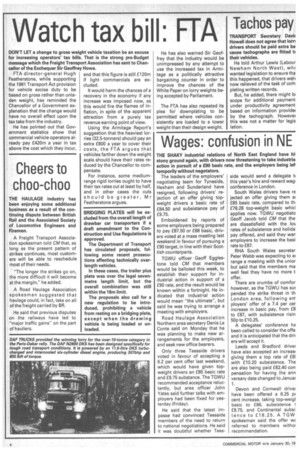Watch tax bill: FTA
Page 4

If you've noticed an error in this article please click here to report it so we can fix it.
DON'T LET a change to gross weight vehicle taxation be an excuse for increasing operators' tax bills. That is the strong pre-Budget message which the Freight Transport Association has sent to Chancellor of the Exchequer Sir Geoffrey Howe.
FTA director-general Hugh Featherstone, while supporting the 1981 Transport Act provision for vehicle excise duty to be based on gross rather than unladen weight, has reminded the Chancellor of a Government explanation that the change would have no overall effect upon the tax take from the industry.
He has pointed out that Government statistics show that commercial vehicle operators already pay £420m a year in tax above the cost which they incur, and that this figure is still E120m if light commercials are excluded.
It would harm the chances of a recovery in the economy if any increase was imposed now, as this would fire the flames of inflation, in spite of the apparent attraction from a purely tax revenue earning point of view.
Using the Armitage Report's suggestion that the heaviest lorries (32.5-tonners) should pay an extra £800 a year to cover their costs, the FTA argues that vehicles farther down the weight scale should have their rates reduced by the Chancellor to compensate.
For instance, some mediumrange rigid lorries ought to have their tax rates cut at least by half, and in other cases the cuts should be greater, Mr Featherstone argues.
BRIDGING PLATES will be excluded from the overall length of drawbar car transporters if a draft amendment to the Construction and Use Regulations is approved.
The Department of Transport has circulated proposals, following some recent prosecutions affecting technically overlength vehicles.
In these cases, the trailer plus plate was over the legal sevenmetre length limit, but the overall combination was still within the 18m limit.
The proposals also call for a new regulation to be introduced, prohibiting a vehicle from resting on a bridging plate, except when the drawing vehicle is being loaded or unloaded. He has also warned Sir Geoffrey that the industry would be unimpressed by any attempt to use the increased tax in Armitage as a politically attractive bargaining counter in order to improve the chances of the White Paper on lorry weights being accepted by Parliament.
The FTA has also repeated its plea for downplating to be permitted where vehicles consistently are loaded to a lower weight than their design weight.
























































